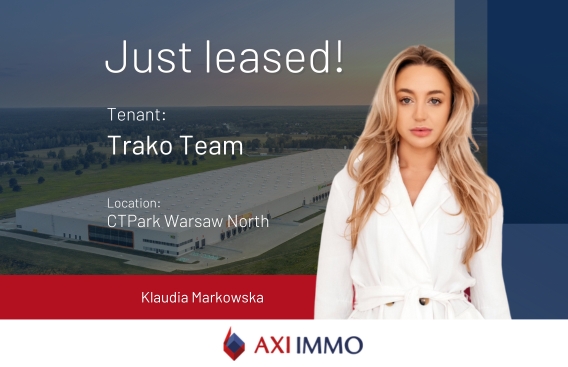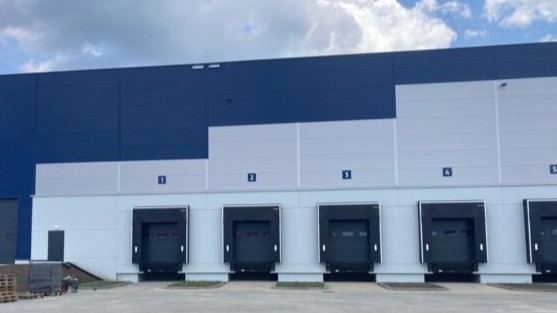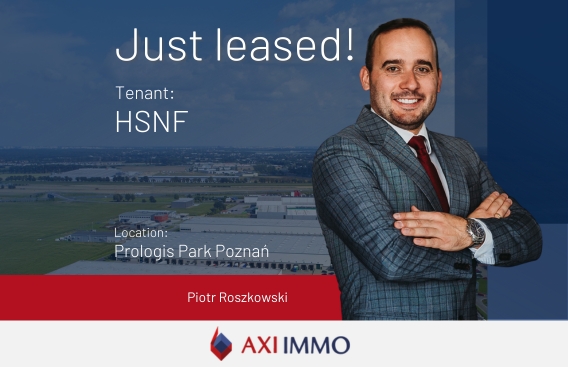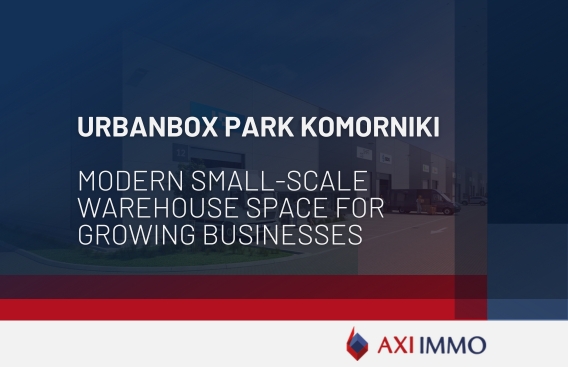Poland as the most attractive warehouse market in Europe – report
A guide of key industrial and logistics markets in Europe prepared by Gerald Eve which AXI IMMO is a member of.
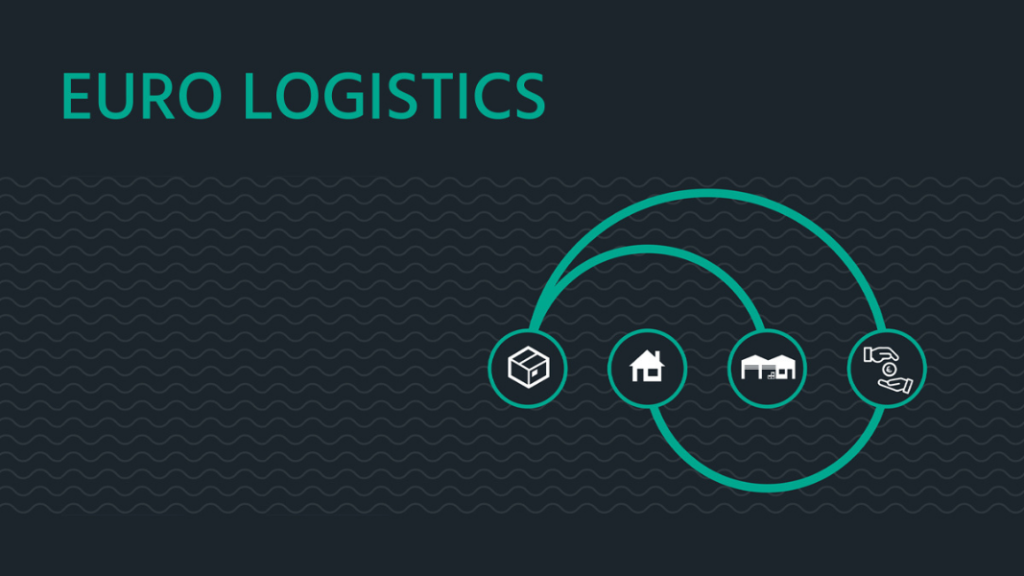
The Gerald Eve International Alliance of real estate advisory firms, which AXI IMMO is a member of, has prepared a guide of key industrial and logistics markets in Europe. The publication presents prime market rents in 77 locations across 20 countries, split into big box, medium box and SBU (small business unit) facilities, as well as market yields in those locations. Moreover, experts from 20 member countries of Gerald Eve prepared unique data on prices of investment land for industrial and logistics developments in 56 key clusters. Poland remains one of the most attractively priced markets in Europe. This is where all 5 of the cheapest European markets in terms of big box rents are located. Moreover, 4 out of the 10 most affordable logistics locations in terms of land prices are also in Poland.
Investors bet on warehouses
The industrial and logistics sector across Europe is benefitting from the ongoing growth of e-commerce. The Covid-19 pandemic has additionally accelerated this trend, leading to heightened demand for warehouse space.
Resilience of the sector to the economic shock caused by the Covid-19 pandemic has resulted in increased investor demand. Investors have withdrawn capital from segments of the markets whose prospects have deteriorated, such as shopping centres, and reallocated it to logistics and industrial facilities. This has led to increases in capital values in the sector, and consequently – to yield compression in many markets. Logistics yields remain the lowest in the United Kingdom, which is considered to be the most mature and liquid commercial real estate market. Net yields in London stand at 3.5%-3.75%. Yields on offer in Germany are also low, between 4 and 4.5% in key markets, reflecting the perception of the country as a safe and stable investment destination. Warsaw, which is the most expensive logistics location in Poland, offers gross yields of 5.5% for SBU units and 6.25% for big box facilities.
„Our analysis of European industrial and logistics markets reveals strength of the sector across the region in the face of Covid-19 challenge. High demand for logistics space, driven by rapid growth of e-commerce, has resulted in rent increases in many markets. Robust fundamentals of the sector have attracted investors and intensified competition for the best assets, leading to upward pressure on pricing and compression of prime yields in many markets”, Renata Osiecka, Managing Partner, AXI IMMO comments.
Poland as an attractive destination for occupiers
Prime headline rents for big box units in Poland are relatively unified across the key markets, with EUR 3.3 – 3.5 per sqm per month achievable in Poznań, EUR 3.2 – 3.6 in Central Poland and Upper Silesia, EUR 3.3 – 3.6 in Lower Silesia and EUR 3.0-3.6 outside of Warsaw. These rates are among the lowest in Europe. In fact, according to the data comparison prepared in cooperation with Gerald Eve, five largest Polish industrial and logistics markets are also the five cheapest markets in Europe.
To put it in perspective, prime logistics and industrial rents in Germany’s most affordable market included in the report – Cologne & Dusseldorf – stand at EUR 5.7-6.2. Meanwhile, A-class warehouses in the most expensive German market – Munich – fetch monthly rents of EUR 6.5-7 per sqm. There is an even wider gulf between Poland and the United Kingdom and Scandinavia. The most expensive location included in the report – Greater London – is recording prime monthly logistics rents as high as EUR 11.3 per sqm. Oslo takes the second spot with EUR 10.4 per sqm and Helsinki comes third with EUR 10 per sqm.
The situation is similar in the SBU segment of the market. Polish cities take the first four spots when looking at the most attractive urban logistics rents in Europe. Warsaw stands out somewhat from the rest of the country, however. SBU rents in the capital are significantly higher compared to other Polish markets, between EUR 4.0 and 5.25 per sqm. Warsaw is experiencing rapid growth of the e-commerce sector, which is translating into high demand for last mile facilities. A location close to the consumer, with access to strategic road infrastructure is necessary for such schemes, but availability of such sites is limited and competition is intense, also from other property sectors. This is exerting upward pressure on rents in this segment of the market.
Warsaw is nevertheless an attractively priced urban logistics location in a European context. Occupiers seeking modern urban warehouses in the London region are facing monthly rents of EUR 9.2 – 22.1 per sqm. Prime SBU rents in Germany range from EUR 6.7-7.2 in Cologne & Dusseldorf, EUR 7-7.5 in Frankfurt and EUR 7.2-7.7 in Berlin, through to EUR 7.5-8 in Munich.
„Attractive occupancy costs and affordable land, combined with relatively low costs of labour and good quality road infrastructure continue to attract warehouse occupiers to Poland. These companies often select Poland as their distribution hub for the wider European region. In addition, high growth potential of the local market, reflected in positive macroeconomic data, as well as low operational costs, all encourage new players wishing to serve the local market to enter, and existing companies to pursue further expansion”, Renata Osiecka sums up.
Investment land
A unique element of the report prepared in cooperation with Gerald Eve is international data on transactional land prices for industrial and logistics developments. The publication includes information on prices of investment plots in key logistics clusters in 56 markets. Poland looks attractive on this measure as well. Only the South Moravian region in Czechia and Eastern Slovakia offer investment land prices below those available in the cheapest of the main Polish markets – Poznań. Prices in Warsaw-city far exceed the levels recorded in the rest of the country, with as much as EUR 1.5m per hectare achievable, and more for selected plots. Nevertheless, investment land in Warsaw is 5.5 times cheaper than in Greater London and 2.7 cheaper than in Munich.
„Compared to the rest of Europe, Poland has relatively efficient administrative procedures related to logistics and industrial development. The process of preparing raw land for development takes an average of 12-18 months, assuming the plot is appropriately zoned. This includes obtaining environmental approvals and a building permit as well as acquiring utility connections. Poland therefore holds a significant competitive advantage over many other European countries, with the building permit alone in many of them taking 24 months and more”, adds Renata Osiecka.
Also read the newer Report: Polish Warehouse Market in Q1 2021.
Recent articles
10 July 2025
Trako Team expands to 22,000 sqm its logistics and warehouse centre near Warsaw, Poland, – advised by the AXI IMMO commercial real estate agency
Trako Team Rafał Kopański has expanded its warehouse space at CTPark
23 June 2025
Panattoni Park Warsaw West Błonie near Warsaw, Poland, with a new warehouse for logistics operator
Panattoni Park Warsaw West - key location and modern warehouse spaces
23 June 2025
HSNF renews lease at Prologis Park Poznań I – Beauty sector tenant continues operations in Greater Poland
HSNF continues its logistics operations in Poland in Poznan region
25 May 2025
UrbanBox Park Komorniki – modern small-scale warehouse space for growing businesses, near Poznan, Western Poland
Urbanbox Park Komorniki warehouse complex with modules from 167 sq m. in a strategic location near Poznań.
